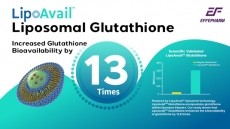Citrus hybrids may offer antioxidant-rich extracts for nutraceuticals
Italian and German scientists found that two new hybrids contained high levels of both polyphenols and vitamin C, and exhibited a high antioxidant activity, “suggesting that their consumption could be useful in the prevention of diseases in which free radicals are involved”.
Results of the EU-funded FLORA Project, a European sixth framework programme, also found that one hybrid known as OTA 9 contained high levels of an anthocyanin called cyanidin 3-glucoside, which reportedly has a stronger antioxidant activity than other common anthocyanins.
“Consumption of OTA 9 fruit or juice might be useful for disease prevention and health promotion,” wrote the researchers, led by Paolo Rapisarda from Italy’s CRA-Centro di Ricerca per l’Agrumicoltura e le Colture Mediterranee.
The new study taps into ongoing interest in the potential health benefits of citrus fruit extracts. In recent years antioxidant-rich extracts have been linked to cholesterol reductions, as well as neurological and joint health benefits.
While many earlier studies have focussed on purely established cultivars, the Italian researchers, in collaboration with Hans-Peter Mock from Leibniz Institute of Plant Genetic and Crop Plant Research, sought to develop new hybrids by crossing clementine cv. Oroval with different cultivars of blood oranges.
According to findings published in Food Chemistry, some of the hybrids showed a high antioxidant activity due to considerable improvements in their polyphenol content, compared to their parents.
The OTA 9 hybrid was singled out as the best source of polyphenols, including flavanones and hydroxycinnamic acids. “These components are of great interest as [...] agents in human health and nutrition. As a result, their recovery from a plentiful source might be economically important,” wrote the researchers.
Some hybrids displayed elevated acid levels and the researchers therefore considered that “neither of these two hybrids was fit to eat as a dessert fruit”.
The antioxidant activity of the hybrids was evaluated using the ORAC (oxygen radical absorbance capacity) assay as well as the induced linoleic acid peroxidation (InLAP) assays.
Results showed that the OTA 9 hybrid had an ORAC score of 6688 units, compared to only 1592 units for its clementine parent. This was the highest value, and double most of the other hybrids. Furthermore, the InLAP score of 88.5 per cent was the highest amongst the other hybrids tested.
“Recent research has demonstrated the possibility of recovering anthocyanins, flavanones and hydroxycinnamic acids from blood orange juice or citrus byproducts and using this extract as an antioxidant ingredient for dietary supplements,” wrote the researchers.
“Having the highest concentration of polyphenols, the OTA 9 juice represents a richer source of antioxidant compounds than blood orange juice; it could potentially be used as raw material to make functional food or pharmaceutical and cosmetic products,” they concluded.
Source: Food Chemistry
Volume 117, Issue 2, Pages 212-218
“Juice of New citrus hybrids (Citrus clementina Hort. ex Tan.xC. sinensis L. Osbeck) as a source of natural antioxidants”
Authors: P. Rapisarda, S. Fabroni, S. Peterek, G. Russo, H.-P. Mock












